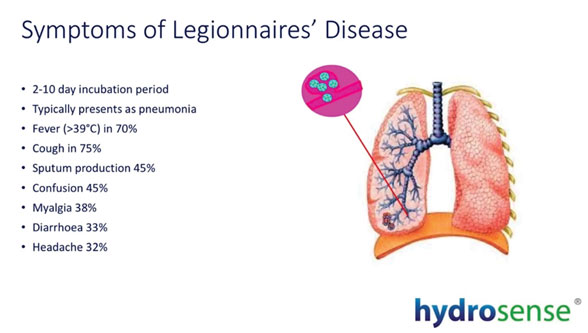Legionella pneumophilla is a deadly pneumonia causing bacterium, Which if inhaled by humans, can lead to fatal respiratory disease. It causes Pontiac fever and Legionnaires’ disease. Legionnaires’ disease is a severe form of pneumonia, which causes potentially fatal complications to occur within human lungs.
According to the WHO: “The death rate from Legionnaires’ disease may be as high as 40–80% in untreated patients and can be reduced to 5–30% through appropriate case management and depending on the severity of the clinical signs and symptoms. Overall the death rate is usually within the range of 5–10% in any outbreak.
To avoid such high risk disease we must prevent formation and spreading of Legionella. Now lets see in details characteristics of Legionella to know why testing is important.
The following conditions allow Legionella to multiply rapidly in man –made water systems and increase the risk of outbreak.
- Temperatures between 20-45°C
- Construction, Presence of old plumbing and corrosion
- Large and complex water systems – as these have a larger surface area for the growth of Legionella and can contain areas in which bacteria can evade biocides
- Differing levels of biocides present in the system
- Areas where no biocide is used ,Areas that produce a lot of water spray or aerosol
- Poor maintenance and control of control measures, No control measures in place at all
- Areas where people with a weakened immune system are present
- pH fluctuations , Nutritional build-up of biofilm, scale, sludge etc*
*Sources of protection and nutrition for Legionella are algae, amoebae and other bacteria. Scale, sludge, biofilm and other sediment can provide favorable conditions for growth and can protect bacteria from hostile temperatures and biocides, that would otherwise kill them.
As mentioned above that the source of Legionella is water system, its our primary responsibility to safeguard the water. We must bring awareness about Water safety.
What are the long-term side effects of Legionnaires’ disease?
Those who survive Legionnaires’ disease can experience severe life-changing and long-term health impacts.
A study carried on 122 survivors in the Netherlands found that survivors of Legionnaires’ disease suffered from chronic fatigue in 75% of cases; had neurological symptoms (such as short and long-term memory loss) in 66% of cases; neuromuscular symptoms (such as muscle pain and loss and movement issues) in 63% and post-traumatic stress disorder (PTSD) in 15% of cases. On average survivors of Legionnaires’ disease have a 1.5-year decrease in their health-related quality of life*.
The infection can be caught from any water source that produces spray or aerosols but some common sources of infection in a hotel setting include showers, pools, spas, hottubs, cooling towers, air-conditioning units and even ice machines. These high-risk areas need to be properly cleaned and managed or microorganisms will quickly multiply. Hot tubs and cooling towers are of particular concern as they have the ability to spread deadly Legionella bacteria over long distances. In warm climates, water temperature is harder to control and can provide Legionella – a heat-loving bacteria – with optimal conditions for rapid growth3. Stagnant water in the pipes of empty rooms can also encourage the growth of scale, sludge and amoeba which protect Legionella and provide the bug with nutrients, thus accelerating its growth and spread.
At present, everyone depends on the Lab culture method for Legionella test, which takes 2-3 weeks to get result whether this area is Legionella free or not. While waiting for result effected area can turn into dangerous zone.
In India, IPL technology offers a latest technology which can provide details whether particular area has Legionella or not, that too in 25 minutes.
For more information,
Website: www.iplindia.com
IT IS BETTER TO HAVE COST EFFECTIVE PREVENTIVE CHECK, RATHER THAN EXPNESIVE AND TIME CONSUMING REMEDIES ON HUMAN SAFTY.

